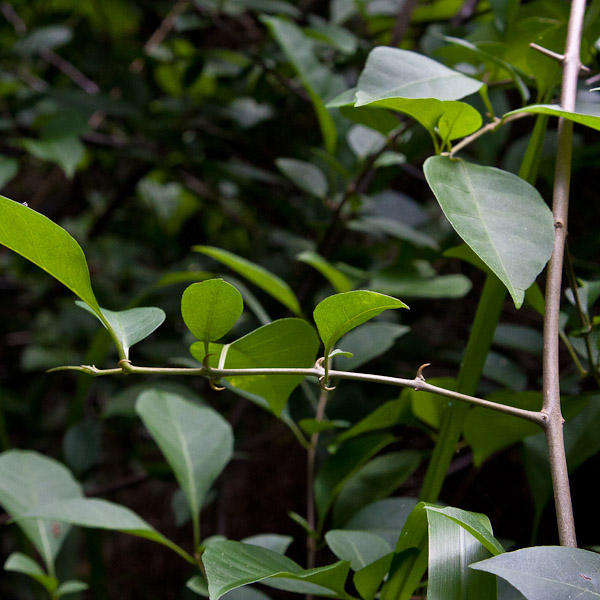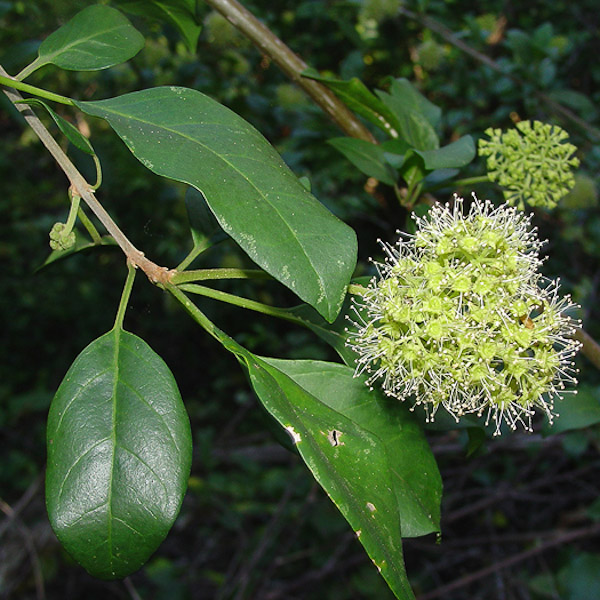Devil’s Claw
Pisonia aculeata
Nyctaginaceae
Here’s a trivia question for flower-buffs: What do Devil’s Claw Vines in the forest, Bougainvilleas at the hotel, Four O’Clocks in the garden, Blollies on the dunes, Beach-Peanuts on the sand, and Red Spiderlings in the rough have in common?
You guessed it—they are all members of the Nyctaginaceae family. And that gem underscores the importance of learning plants by families, not just one at a time. If you know some of these species, do you see the family resemblance? The Devils Claw leaves and branching pattern look like Bougainvillea. A lot of Nyctaginaceae have colorful bright reddish-purplish pigments—Bougainvillea, Four O’Clock, Beach-Peanut, Red Spiderling, even the Blolly fruit. The colorful “flowers” have no petals. The colorful parts are bracts, that is, modified leaves associated with the flowers. There are also sepals, and the fused sepals can make a tube, this often tightly enclosing the one-seeded fruit.
In today’s plant as the sepals enclosing the fruit have odd rows of protruding glands to help the fruit cling to passing animals. They are are gummy-sticky.
The name Devil’s Claw comes from scary back-curved spines. We know the pain from recent ankle-bleeding experience. But why have curved spines for self-defense when straight bayonets are more to the point? Perhaps reverse-curvation helps the vine cling to its host trees. Hurricane country, after all. Under ideal conditions, Devil’s Claw can graduate from its lowly clinging vine status to full-blown treehood.
The plants are either male or female, that is, they are dioecious, and the male and female flowers differ. The male flowers are bowl-shaped and yellowish; the females are narrower, more constricted, with a comical brushy stigma resembling the tuft on Jeff Dunham’s friend Peanut. (Huh? Just Google Image it.)
Devil’s Claw occurs throughout much of the American Tropics, including South Florida, and now extends around most of the warm-climate world, no doubt due to artificial introductions. (This post is a collaborative effort by John Bradford and George Rogers on the east shore of Lake Okeechobee. JB took today’s pictures.)

